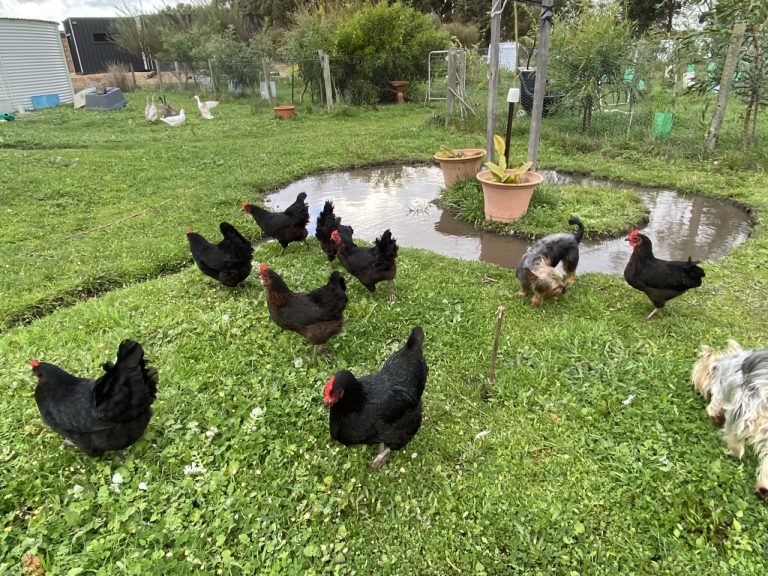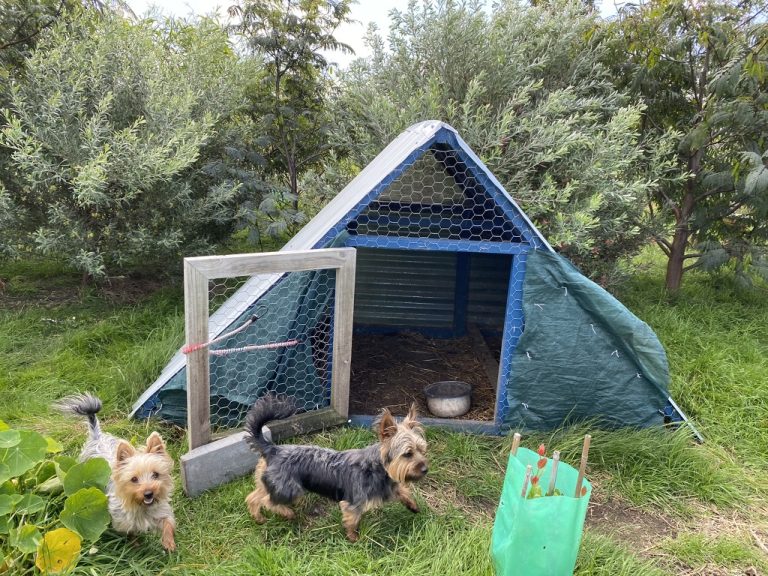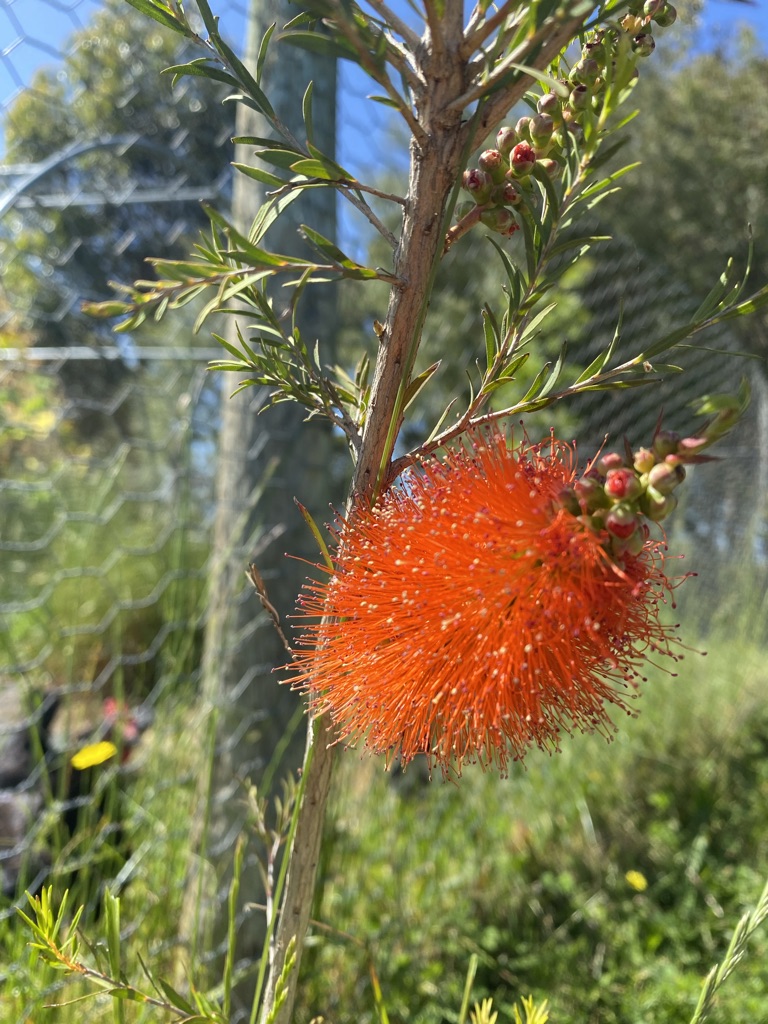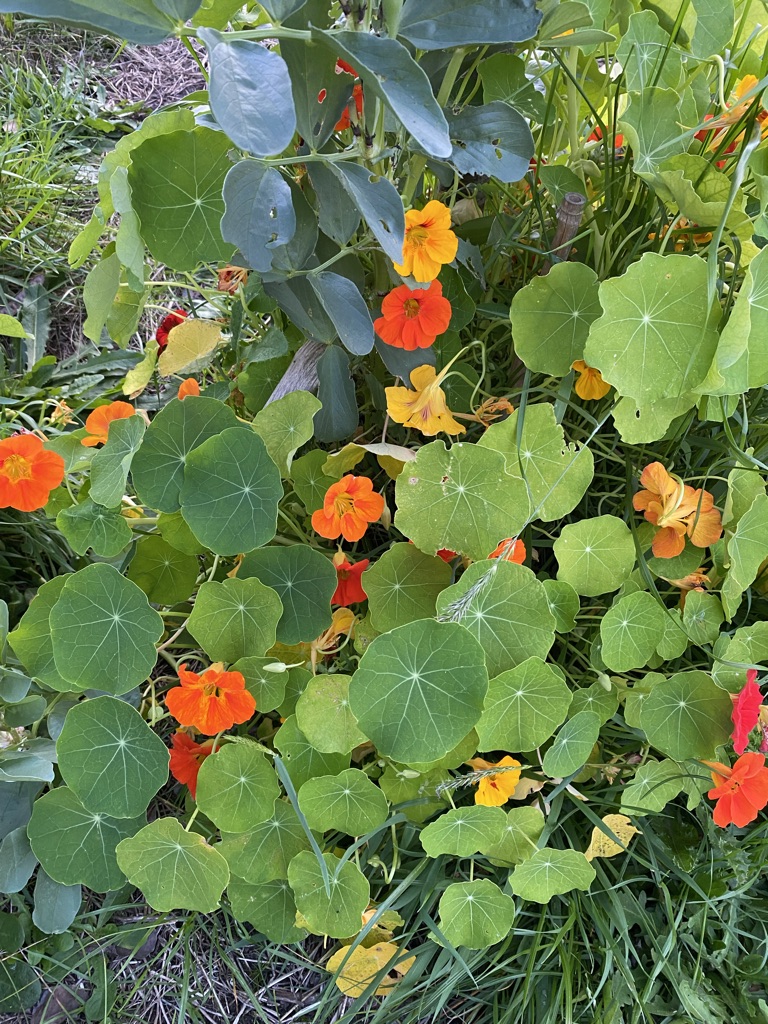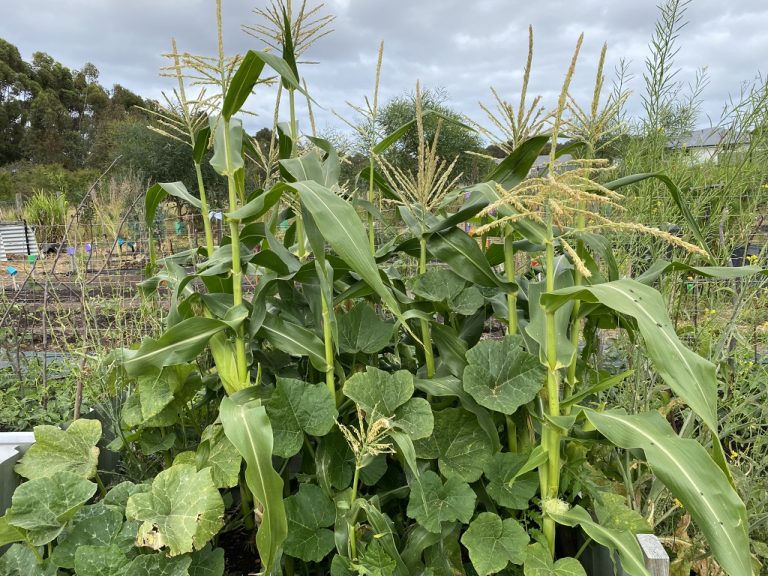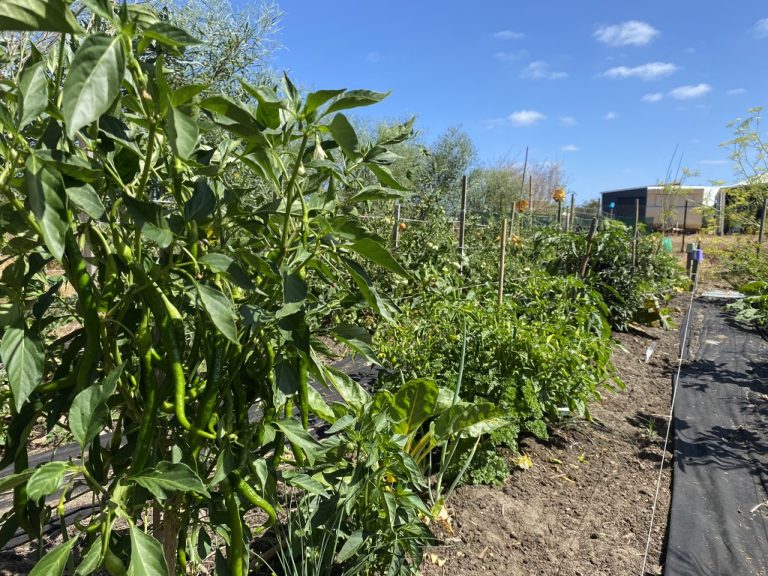Use and Value Diversity
by Jenny Hanna
Nearly 4 years ago, we started planting on our Witchcliffe (Southwest WA) vacant block. We aim to eventually fill it up with a diverse range of plants – vegetables, herbs, fruit trees, local natives, deciduous trees for colours and mulch as well as trees for firewood. This way, there will be plenty of food and resources for humans and for the diverse birds, insects and many other life forms we are trying to attract.
We understand that there will always be lots of challenges in implementing a permaculture-designed garden whether it’s an established or new site. In our situation, we have to plant from lots of small tube stock to plant trees in volume. Due to no greenhouse in the first year, we purchased vegetable seedlings for our veggie patch. Planting on the ground was the easy bit. Keeping the plants alive and healthy was hard. It was so frustrating as most veggies didn’t survive overnight, couldn’t produce any harvest and the trees were suffering badly from attack. We were dealing with an enormous range of pests that ate the young plants – different species of snails, caterpillars, grasshoppers, mice, rats, rabbits and, the worst of all, weevils. Weevils attack all types of plants and all parts of the plant, including the roots. Our area is infested with so many weevils because we are adjacent to a vineyard farm. As for snails, we used to collect bucket loads then throw them in the bin as we had an abundance of them in our first winter.
What would permaculturists do if faced with an enormous pest problem? We would look at permaculture principles to see which ones we can apply, as well as adding more elements. By applying the principle Use and value diversity, we have started seeing good results. Here are some strategies we have implemented so far to help with pest control.
Free range Australorp Chickens. We have proven they are a tough breed, clever, great layers, can outrun a fox (that’s another story) and are great at scratching for bugs on the ground – so it helped. For some reason, most of them didn’t eat weevils and snails. I have witnessed one of the chickens being fast and beating the dogs in catching a mouse. They are free-range over the whole block apart from the veggie patch.
Free range Indian Runner ducks. We have lots of them working now. We had learned from other permies that these breeds are great if you have a veggie patch so we got them. It turned out better than we expected. They are the most amazing snail, weevil and all sorts of bug hunters. They are very lightweight so they are allowed in my veggie patch even with little seedlings on the ground. They haven’t eaten the veggies so far but they just concentrate on hunting all day. I struggle to find snails and weevils these days. Plus, they spread their duck manure and are great layers.
Australian silky terriers. We have two named Haku and Chihiro. They are both family pets and working dogs so they are free range on the block. They are full of energy and have a high prey drive towards rats, mice, rabbits, snakes and foxes. Since we got them, we have had no more rodent issues so far. We have trained them to be friendly with chickens, ducks, and the little blue wrens that are safe to roam around, as well as leaving the frogs alone instead of chasing them. These dogs will only chase crows away (crows hang around to steal duck eggs) but not other birds which is great.
Planting diverse local native hedges. These local varieties of hedges grow fast and it helps provide habitat for all sorts of birds who in turn eat a lot of pests in the garden.
Planting lots of flowers in all garden areas to attract beneficial insects such as ladybugs, wasps, hoverflies and more birds.
Companion planting method of diverse plants. We now have a greater variety of veggies and flowers which means it’s not a monoculture – which is prone to be an easy target for pests.
Installing multiple bird baths anywhere for birds to come and hunt for pests – bird baths can be expensive so we recycle big old shallow bowls from the tip and use them as DIY bird baths.
Not using any spray chemicals or pesticides at all. We have learned that this will keep our block a safe space for us as well as for natural predators. We now have many types of insects and birds hanging around. In one instance, my husband saw a huge Wedge Tail Eagle standing on our corner fence post. What an amazing creature. It did not take any of our chickens, thank goodness, so it must be after other prey.
It’s good to know that if we use diversity and work with nature, it teaches us lots of lessons and it presents us with many opportunities – like finally growing a thriving veggie patch with hardly any pest damage!

